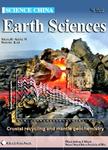Progress of vegetation modelling and future research prospects
作者机构:State Key Laboratory of Tibetan Plateau Earth SystemResources and Environment(TPESRE)Institute of Tibetan Plateau ResearchChinese Academy of SciencesBeijing 100101China College of Resources and EnvironmentUniversity of Chinese Academy of SciencesBeijing 100049China British Antarctic SurveyCambridge CB30ETUnited Kingdom Department of Physical Geography and Ecosystem ScienceLund UniversityLund 22362Sweden College of Life SciencesZhejiang Normal UniversityJinhua 321004China School of Atmospheric SciencesSun Yat-sen University and Southern Marine Science and Engineering Guangdong Laboratory(Zhuhai)Zhuhai 519082China
出 版 物:《Science China Earth Sciences》 (中国科学(地球科学英文版))
年 卷 期:2024年第67卷第9期
页 面:2718-2738页
核心收录:
学科分类:07[理学] 070601[理学-气象学] 0706[理学-大气科学] 0713[理学-生态学]
基 金:supported by the China’s National Key Research and Development Projects(Grant No.2023YFF0805200) the National Natural Science Foundation of China(Grant Nos.41988101&42075047&31870462) the FORMAS of Sweden(Grant No.2020-02267) the Crafoord(Grant No.20220564) the National Key Scientific and Technological Infrastructure Project“Earth System Science Numerical Simulator Facility”(Earthlab)
主 题:Vegetation models DGVMs Ecosystems Plant functional types Plant functional traits
摘 要:Terrestrial vegetation is a crucial component of the Earth system,and its changes not only represent one of the most distinct aspects of climate change but also exert significant feedback within the climate system by exchanging energy,moisture,and carbon *** quantitatively and mechanistically study climate-vegetation feedback,numerical vegetation models have been developed on the theory of ecophysiological constraints on plant functional *** models eventually can simulate vegetation distribution and succession across different spatial and temporal scales,and associated terrestrial carbon cycle processes by categorizing vegetation into biomes according different plant functional types and their associated environmental *** we review the developing history of vegetation models and provide recent advances and future *** 21st century,static vegetation models,as developed statistical models,can only simulate equilibrated characteristics of vegetation *** last several decades,Dynamic Global Vegetation Models(DGVMs)have been developed to simulate instantaneous responses of vegetation to climate change and associated dynamics,and can be coupled with Earth system models to investigate interactions among atmosphere,ocean,and *** are also widely applied to investigate the dynamics accounting for changes in the geographic distribution patterns of land surface vegetation at different spatial and temporal scales and to assess the impacts of terrestrial carbon and water fluxes and land use *** suggest that future vegetation modeling could integrate with machine learning,and explore vegetation transient response and feedback as well as impacts of process hierarchies and human activities on climate and ecosystem.



